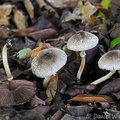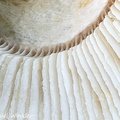148/3075
Home /
Bresadolia paradoxa growing in Yopal. When it was still known as Polyporus udus I really enjoyed eating it in the Bolivian Amazon. However, specimen was slightly bitter after we fried it.
Bresadolia paradoxa was described from the Brazilian Atlantic forest. Bresadolia uda, first described as Polyporus udus is native in SE Asia.
- Created on
- Saturday 29 April 2023
- Posted on
- Friday 7 July 2023
- Albums
- Visits
- 3414

